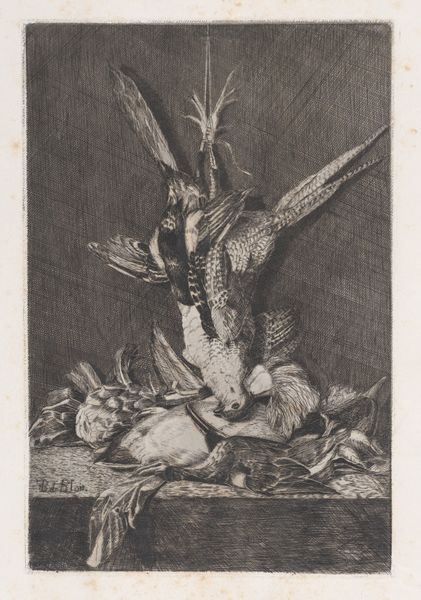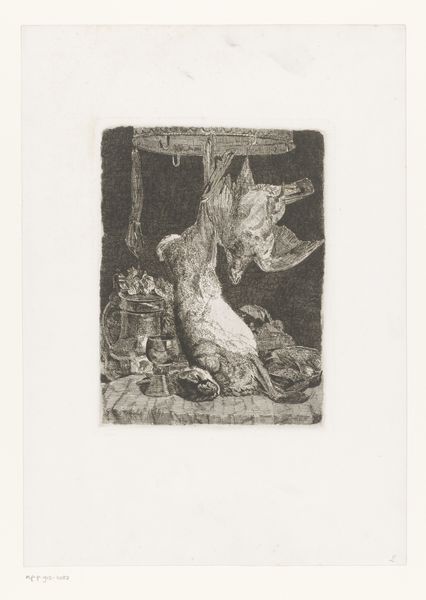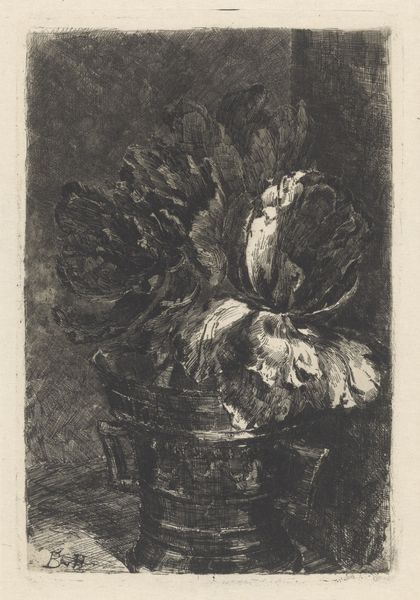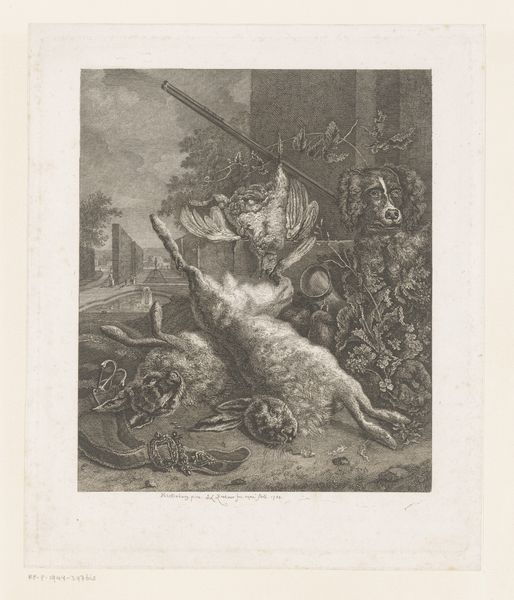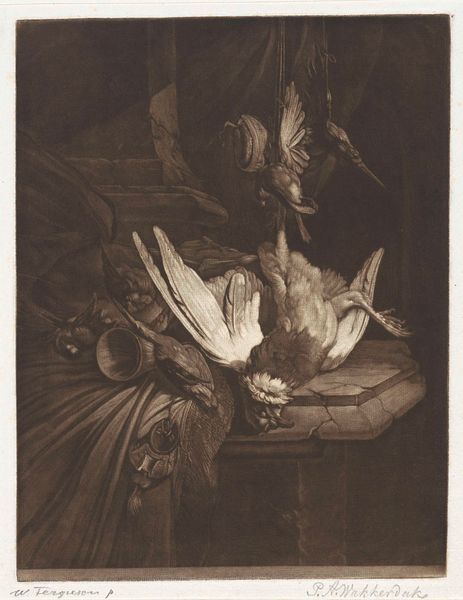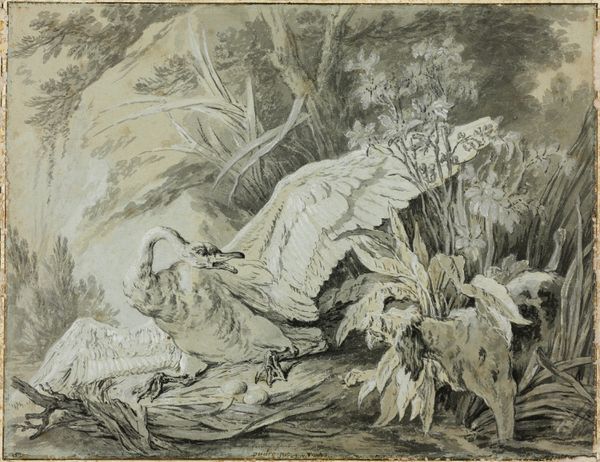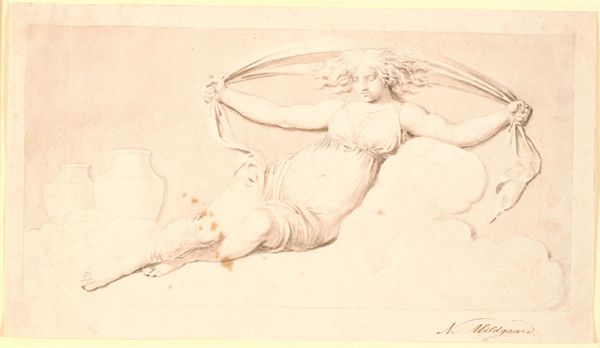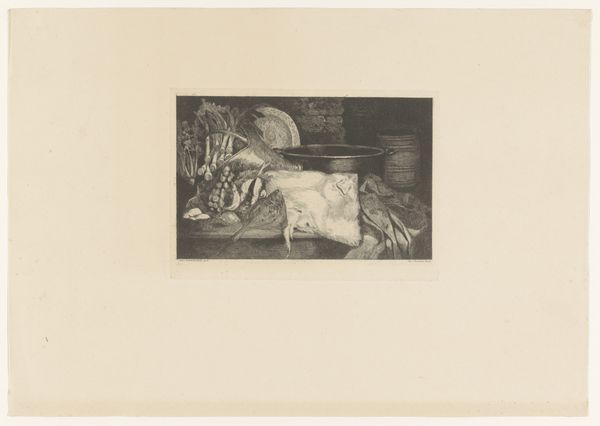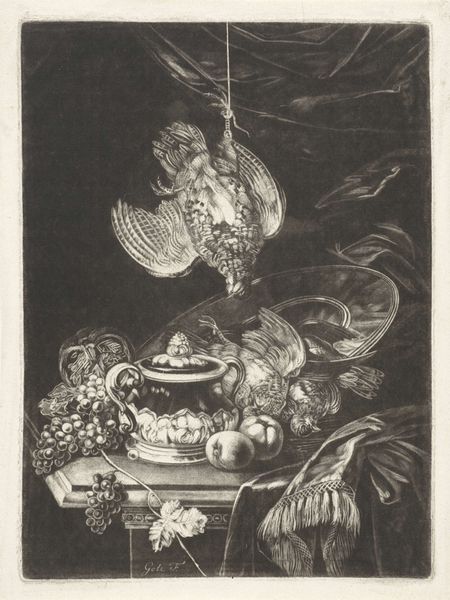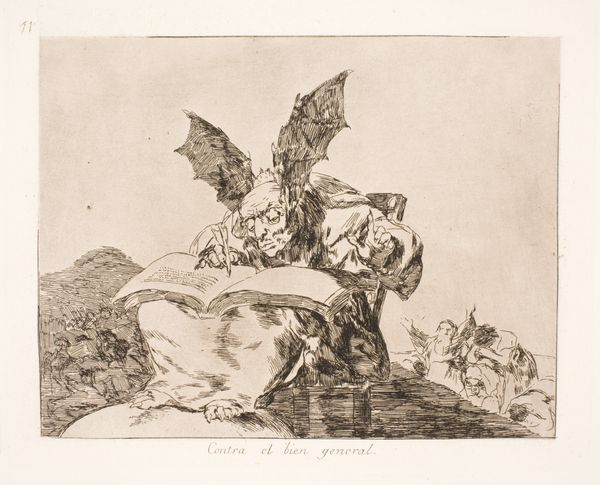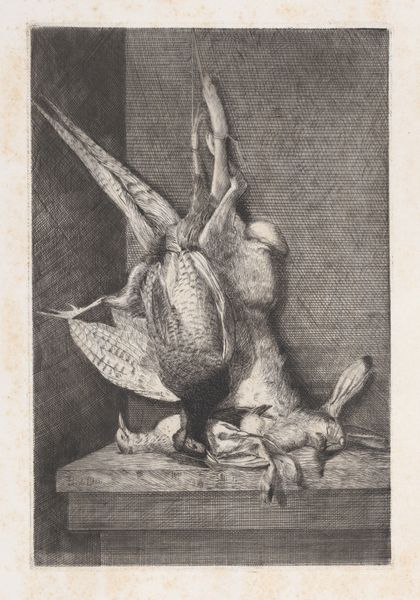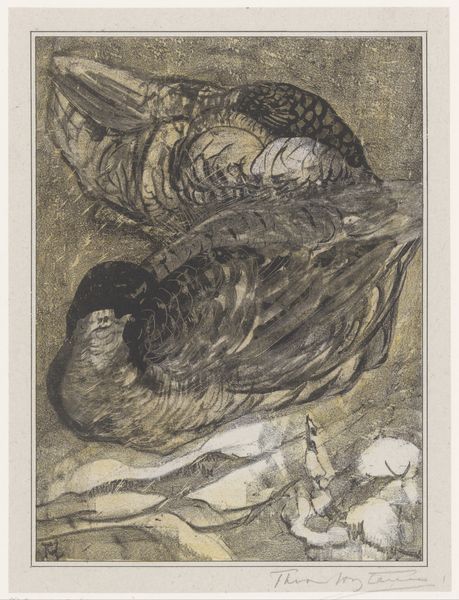
painting, oil-paint
#
narrative-art
#
baroque
#
painting
#
oil-paint
Dimensions: 72.5 x 58.4 cm
Copyright: Public Domain
Editor: Right, next up we have Johann Heinrich Roos’s *Still Life with Dead Birds*, painted in oil back in 1676. It’s currently hanging in the Städel Museum. Honestly, it's a bit morbid, but the textures of the feathers are incredible. What strikes you when you look at this piece? Curator: Morbid, maybe. Truthful, absolutely. It reminds me of winter mornings in the countryside. Think about the Dutch Baroque period – life was often a stark contrast of plenty and scarcity, feasting and famine. And isn't Roos reflecting on that duality, too? Consider the composition, almost like a pyramid with the birds forming a descending hierarchy from fowl to the smaller birds on the bottom tier. Editor: That's a cool way to look at it. I was just thinking about death, but the idea of social hierarchy is much more interesting. Curator: Exactly! Roos’s not simply painting dead birds; he’s making a statement, asking, perhaps, about our place in the world and who gets to be at the top and bottom. Doesn’t the painting evoke that for you now? I imagine that some people would be looking forward to eating while others would be horrified. Editor: It does, especially the way those birds are displayed almost like trophies. It's unsettling and impressive at the same time. Curator: Unsettling and impressive - perfectly captured! I find myself wondering, each time I see it, what Roos himself truly believed. Did he view this with sorrow or simply acceptance? Maybe both, layered like those meticulously rendered feathers. Editor: It definitely gives you something to think about. I’ll never look at a still life the same way again! Curator: Wonderful, then we’ve truly connected with it! On to the next!
Comments
stadelmuseum about 2 years ago
⋮
Dutch and Flemish hunting still lifes also set an example for German painters of the Baroque. Here, Johann Heinrich Roos has staged the dead poultry as overwhelmingly lifelike hunting trophies. As in the case of Jan Weenix’s still life with a dead rabbit and birds, this painting would have reminded contemporary viewers of the aristocratic privilege of the hunt. At the same time, with its meticulous rendering of the lifeless bodies, it also illustrates a fundamental principle of the Baroque outlook on the world – the transience of earthly life.
Join the conversation
Join millions of artists and users on Artera today and experience the ultimate creative platform.
